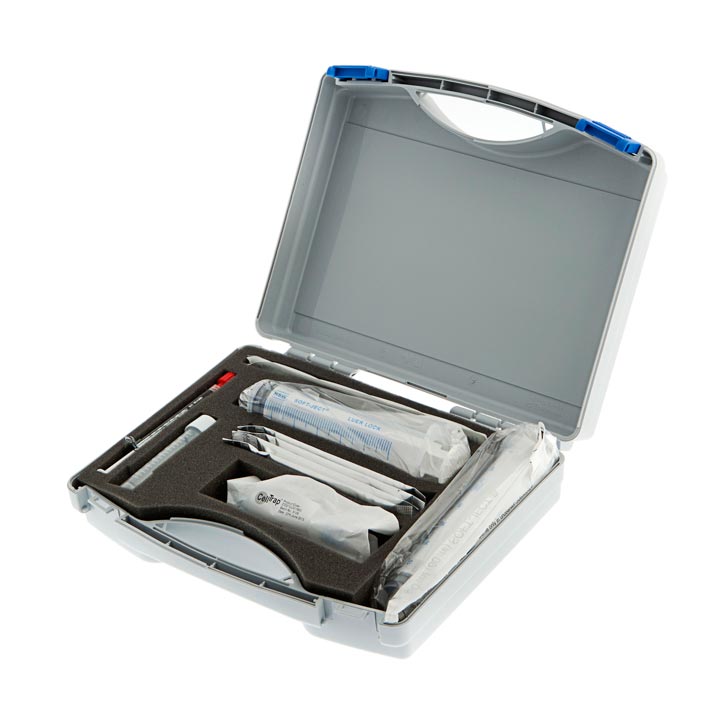
Legionella Testing For Domestic Water Systems
Scientists at Public Health England (PHE) have found that Legionella is on the increase in domestic homes. Recent Research revealed that up to 1.5 million households in the UK could be harbouring the potentially fatal Legionella organism. Experts fear household showers may be to blame for hundreds of cases each year where the source of infection cannot be identified1.
Factors Affecting Increased Risk of Legionella in Domestic Water Systems
- Design – Domestic water systems can be divided into two types: a water storage tank, and mains water. The former carries higher risks. Water sitting in a cold-water tank can cause a build-up of biofilm on the tank walls. If Legionella is left to breed in biofilms, then it can infect and re-infect showers and taps which are fed from the tank.
- Temperature– Hot water tanks are less of a problem if they are kept at temperatures higher than 55°C, which kills the bug. Cold water should be kept below 20°C to control Legionella growth and spread. In summer and in warmer countries this can be very difficult to achieve and flaws in the combined hot and cold-water system design often mean that hot water pipes heat the cold water, raising the temperature and encouraging Legionella growth.
- Number of occupants– premises with multiple or changing occupancy, or where water systems are shared between units within a building, represent higher potential for Legionella exposure, and so should be given special consideration. Smokers, the elderly and babies are also more susceptible to infection.2
- Showers– Showers are the main source of Legionella dispersal in domestic water systems. If showers are not being used regularly e.g. between tenancies or holidays, this can present a high-risk scenario. Bacteria can grow in the biofilms which form when the shower is not being used, and the shower itself is a perfect means of dispersal of the aerosols that spread Legionella bacteria.
- Other risk areas– other potential Legionella sources include domestic spa pools within or in close proximity to the property, domestic swimming pools, garden hose pipes, pressure washing devices, and glasshouse watering systems and humidifiers. 2
How to manage Legionella risks in Domestic Water Systems?
Domestic water systems such as showerheads should be cleaned between each occupancy. Microbiologists also recommend that homeowners returning from holiday ‘flush out’ showers for several minutes. Dr Tom Makin advises: ‘Hold your breath, turn the shower on and leave the bathroom. And don’t go back in for a while as contaminated droplets can remain airborne for up to 30 minutes.’ 2 However, it is important to understand that the whole water system can harbour Legionella and that while the shower head is the main source of dispersal the Legionella can grow anywhere in the system, particularly in cold water tanks. Still, even if you take precautions, how can you be sure that your water system is actually Legionella free and is not posing a risk to you, your family or your guests?
The easiest way to get a peace of mind is to use a simple, DYI Legionella test. Hydrosense test is the only Legionella test in the world that can be fully conducted on-site and does not require any in-depth training or experience. It works just like a pregnancy test- you put the water sample on a test and wait 25 minutes to receive the result. One line indicates that Legionella has not been detected and two lines mean that Legionella is present in your water system. If the problem is identified you are advised to contact water management professional who will be able to disinfect your water system and ensure that you, your family and your guests are safe.
Remember that Legionnaires’ disease is now killing ~1 in every 10 people who are infected 3
Legionella- Don’t risk it. Test it.
Recommended Kits
Our Single Syringe Test Kit is both flexible and sensitive – it allows for sample collection from any water source and has an excellent Limit of Detection of 100 CFU/L.
The Risk Assessment Test Kit can help to identify the source of infection or risk and help in developing a risk control management plan.
References
- Hagan P. (2017) Deadly Legionnaires bug is lurking in 1.5million British homes: Researchers warn killer disease is on the rise – and showers could be to blame. Daily Mail, online. Available at : https://www.dailymail.co.uk/news/article-4569428/Deadly-Legionnaires-bug-lurking-1-5m-British-homes.html[Accessed 12 Oct 2018].
- Public Health England (2018) The investigation of household water systems in cases of Legionnaires’ disease. Guidance for health protection teams, online. Available at: https://assets.publishing.service.gov.uk/government/uploads/system/uploads/attachment_data/file/635817/Investigating_Legionella_household_settings.pdf[Accessed: 12 Oct 2018]
- Gov. (2018). Legionnaires Disease and Pontiac Fever | Legionella | CDC. [online] Available at: https://www.cdc.gov/legionella/[Accessed 30 May 2018].
Other resources
- How to minimise the risk of Legionella in domestic water services: https://www.cibsejournal.com/technical/testing-the-water-legionella-bacteria-containment/
- How to manage Legionella in hot and cold-water systems: http://www.hse.gov.uk/healthservices/legionella.htm


